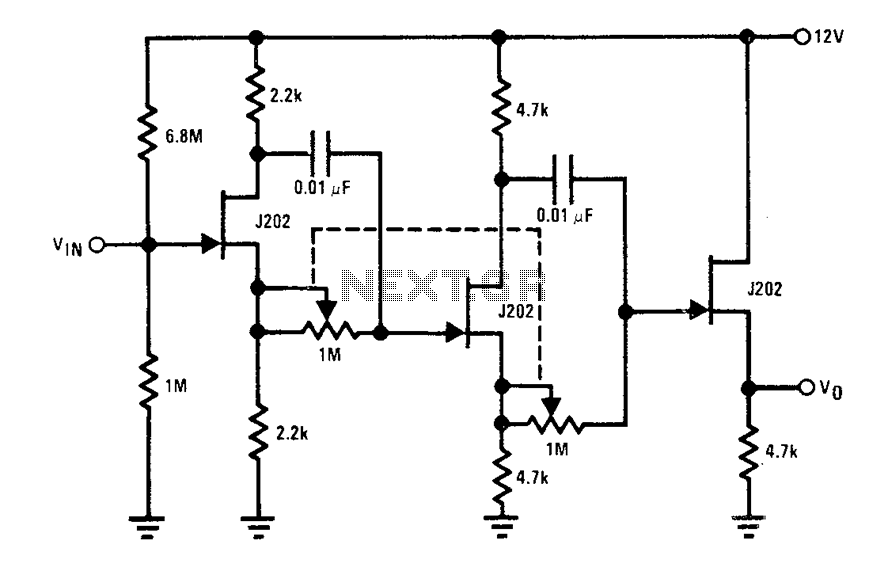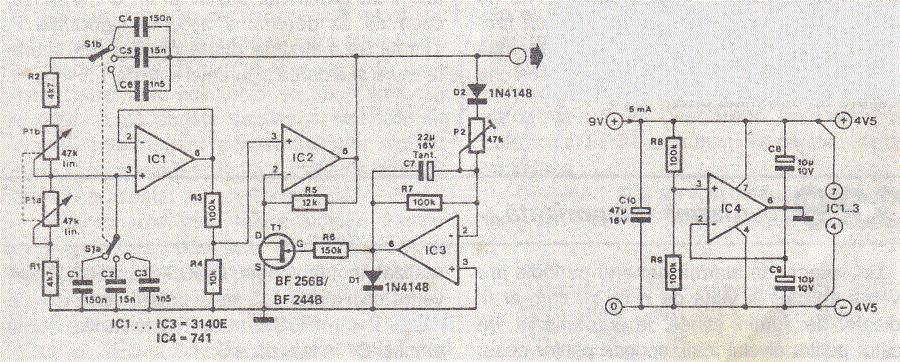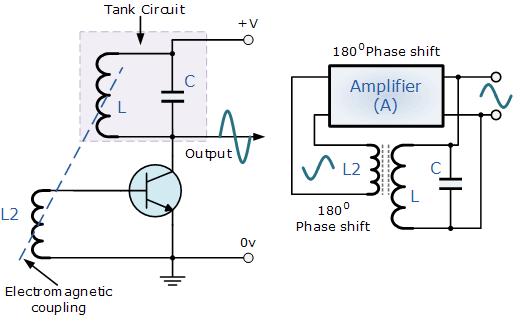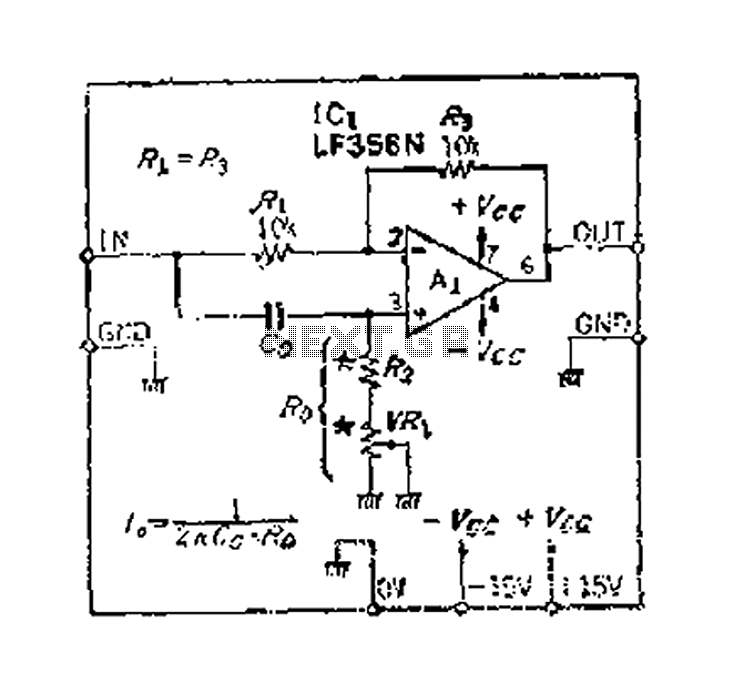
0-360 phase shifter circuit diagram

Each J202 JFET stage provides up to 180 degrees of phase shift controlled by a 1 megohm potentiometer. The potentiometer allows for complete control of the groups. JFETs are ideal for the designated circuit because they do not load the phase shift network.
The J202 JFET (Junction Field Effect Transistor) is utilized in this circuit to achieve precise phase shifting capabilities, making it suitable for applications in audio processing, signal modulation, and other electronic systems requiring phase manipulation. The inclusion of a 1 megohm potentiometer enables users to adjust the phase shift dynamically, providing a range of 0 to 180 degrees. This flexibility is crucial for tuning the circuit to achieve desired signal characteristics.
In the circuit design, each JFET stage is connected in a manner that allows the output of one stage to serve as the input for the next, thereby cascading the phase shift effect. The high input impedance of the J202 JFET ensures minimal loading on the preceding phase shift network, preserving signal integrity and preventing distortion. This characteristic is particularly advantageous in sensitive applications where signal fidelity is paramount.
The potentiometer is connected to the gate of the JFET, allowing for variable control over the gate voltage, which in turn influences the channel conductivity and the resultant phase shift. The circuit may also incorporate bypass capacitors to stabilize the power supply and reduce noise, ensuring reliable operation.
Overall, the design leverages the unique properties of JFETs and the adjustable nature of the potentiometer to create a versatile phase shifting circuit suitable for a variety of electronic applications.Each J202 JFET stage provides up to 180 phase shift by 1 megohm potentiometer control. Potentiometer complete control groups. JFETs are ideal for the designated circuit, becaus e they do not load phase shift network.
The J202 JFET (Junction Field Effect Transistor) is utilized in this circuit to achieve precise phase shifting capabilities, making it suitable for applications in audio processing, signal modulation, and other electronic systems requiring phase manipulation. The inclusion of a 1 megohm potentiometer enables users to adjust the phase shift dynamically, providing a range of 0 to 180 degrees. This flexibility is crucial for tuning the circuit to achieve desired signal characteristics.
In the circuit design, each JFET stage is connected in a manner that allows the output of one stage to serve as the input for the next, thereby cascading the phase shift effect. The high input impedance of the J202 JFET ensures minimal loading on the preceding phase shift network, preserving signal integrity and preventing distortion. This characteristic is particularly advantageous in sensitive applications where signal fidelity is paramount.
The potentiometer is connected to the gate of the JFET, allowing for variable control over the gate voltage, which in turn influences the channel conductivity and the resultant phase shift. The circuit may also incorporate bypass capacitors to stabilize the power supply and reduce noise, ensuring reliable operation.
Overall, the design leverages the unique properties of JFETs and the adjustable nature of the potentiometer to create a versatile phase shifting circuit suitable for a variety of electronic applications.Each J202 JFET stage provides up to 180 phase shift by 1 megohm potentiometer control. Potentiometer complete control groups. JFETs are ideal for the designated circuit, becaus e they do not load phase shift network.




